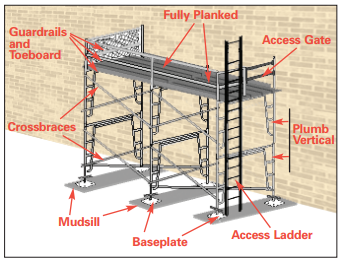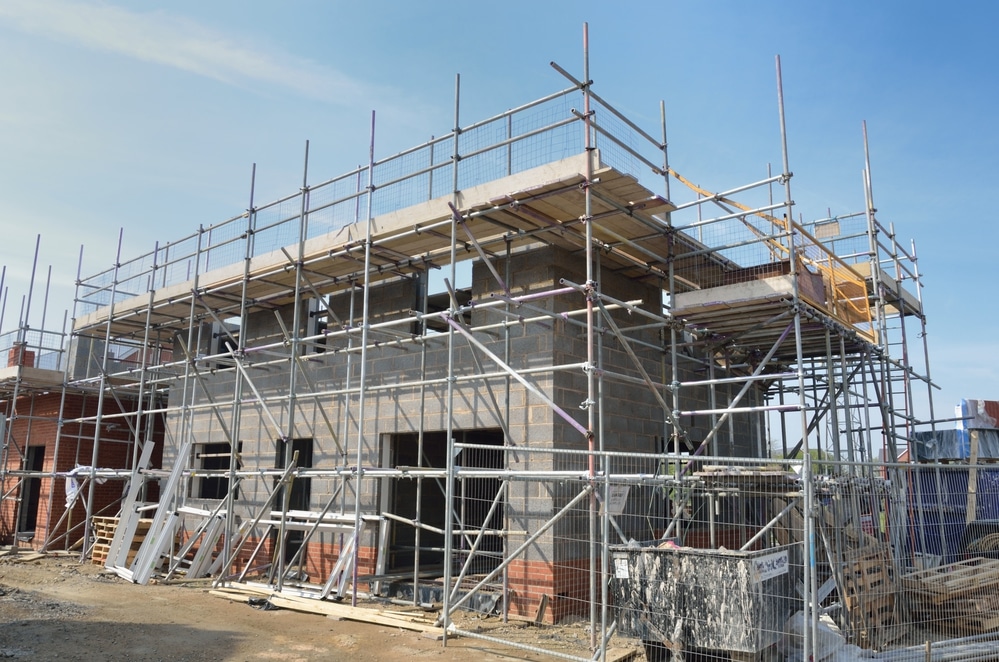Exploring the Various Kinds Of Scaffolding Utilized in Building Tasks
The construction industry relies greatly on numerous types of scaffolding to meet certain job demands, each offering distinctive advantages and applications. Traditional frame scaffolding gives a sturdy foundation for basic tasks, while suspended scaffolding is important for job on skyscraper structures.

Standard Framework Scaffolding
Standard framework scaffolding is among one of the most extensively used approaches in the building sector because of its toughness and versatility. This system includes vertical and straight structures that are assembled to develop a steady system for materials and employees. The main elements consist of upright articles, straight ledgers, and angled dental braces, which with each other supply a solid structure that can support substantial lots.
One of the crucial benefits of traditional framework scaffolding is its adaptability to different building projects, varying from property structures to large industrial frameworks. The modular layout allows for easy setting up and disassembly, making it efficient for both lasting and short-term tasks. In addition, the system can be customized in height and size, suiting different structure designs and website problems.
Security is paramount in scaffolding applications, and conventional frame systems are outfitted with guardrails and toe boards to protect against drops and ensure employee protection. Furthermore, regular assessments and adherence to security regulations are important in keeping the stability of the scaffold. Generally, standard structure scaffolding stays a fundamental choice in the construction sector, supplying a dependable platform for labor and enhancing overall project efficiency

Suspended Scaffolding
Put on hold scaffolding provides a distinct option for building and construction jobs that need access to raised surfaces, specifically in circumstances where standard frame scaffolding may be impractical. This type of scaffolding is usually suspended from the roofing system or upper degrees of a structure, making use of a system of ropes, sheaves, and platforms to produce a working area that can be adapted to various elevations.
One of the primary advantages of put on hold scaffolding is its flexibility. It can be conveniently repositioned or reduced to accommodate adjustments in building needs, making it suitable for tasks such as window installment, frontage work, and upkeep on skyscrapers. In addition, the very little impact of put on hold scaffolding enables for far better usage of ground space in metropolitan environments, where room is usually restricted.
Safety is a crucial consideration in the usage of put on hold scaffolding. Overall, suspended scaffolding provides a effective and reliable solution for accessing hard-to-reach locations in different construction situations, improving both productivity and safety and security on website.
System Scaffolding
System scaffolding, often considered as a modern-day solution in the scaffolding industry, is composed of pre-engineered components that can be swiftly constructed and adapted for numerous building and construction jobs. Scaffolding. This kind of scaffolding is characterized by its modular style, which permits adaptability and performance on task websites, accommodating structural requirements and different elevations
Typically made from high-strength steel or aluminum, system scaffolding uses enhanced durability and security. The elements include upright blog posts, horizontal ledgers, and angled dental braces, which adjoin firmly, ensuring a robust framework. The style frequently includes standardized fittings, simplifying setting up and disassembly procedures, thus reducing labor time and expenses.

Rolling Scaffolding
Moving scaffolding is a functional alternative to conventional set scaffolding, designed for mobility and convenience of use on construction sites. This type of scaffolding includes a platform supported by frames with wheels, enabling workers to conveniently move it as needed. The flexibility function considerably improves efficiency, as it lessens downtime connected with assembling and dismantling repaired scaffolding.
Typically built from light-weight products such as aluminum or steel, visit this site rolling scaffolding provides a strong yet portable solution for jobs calling for constant repositioning - Scaffolding. It is particularly useful in jobs such as paint, drywall setup, and electric work, where accessibility to various elevations and places is required
Safety is critical in rolling scaffolding layout, with functions such as securing wheels to avoid unintended movement when being used, and guardrails to safeguard workers from drops. Furthermore, lots of versions are flexible in elevation, accommodating numerous project requirements.
Cantilever Scaffolding

The design of cantilever scaffolding usually includes utilizing arms or braces anchored to a building or framework, making it possible for the platform to extend external safely. Security is vital; thus, these scaffolds have to be crafted to endure ecological problems and various loads. Routine inspection and maintenance are important to make certain architectural honesty and employee security.
Cantilever scaffolding is Learn More preferred for its versatility and reliable usage of space, making it a prominent selection in urban atmospheres where space constraints are typical. It helps with much easier access to high altitudes, inevitably adding to the overall effectiveness of building jobs. Similar to all scaffolding kinds, proper training and adherence to security standards are essential for employees utilizing cantilever scaffolding.
Final Thought
Conventional frame scaffolding offers security, while suspended scaffolding provides adaptability for raised tasks. System scaffolding assists in fast assembly, and rolling scaffolding boosts wheelchair for varying job environments.
Typical framework scaffolding supplies a strong foundation for basic tasks, while put on hold scaffolding is vital for job on high-rise frameworks.Moving scaffolding is a flexible alternative to typical fixed scaffolding, made for mobility and ease of use on building and construction sites. As with all scaffolding types, correct training and adherence to safety requirements are essential for employees making use of cantilever scaffolding.
Conventional frame scaffolding supplies stability, while suspended scaffolding provides convenience for elevated jobs. System scaffolding promotes quick assembly, this hyperlink and rolling scaffolding improves movement for varying job atmospheres.